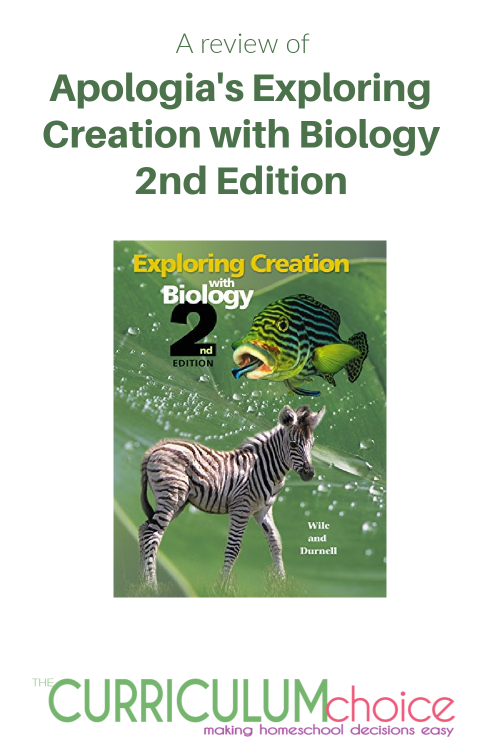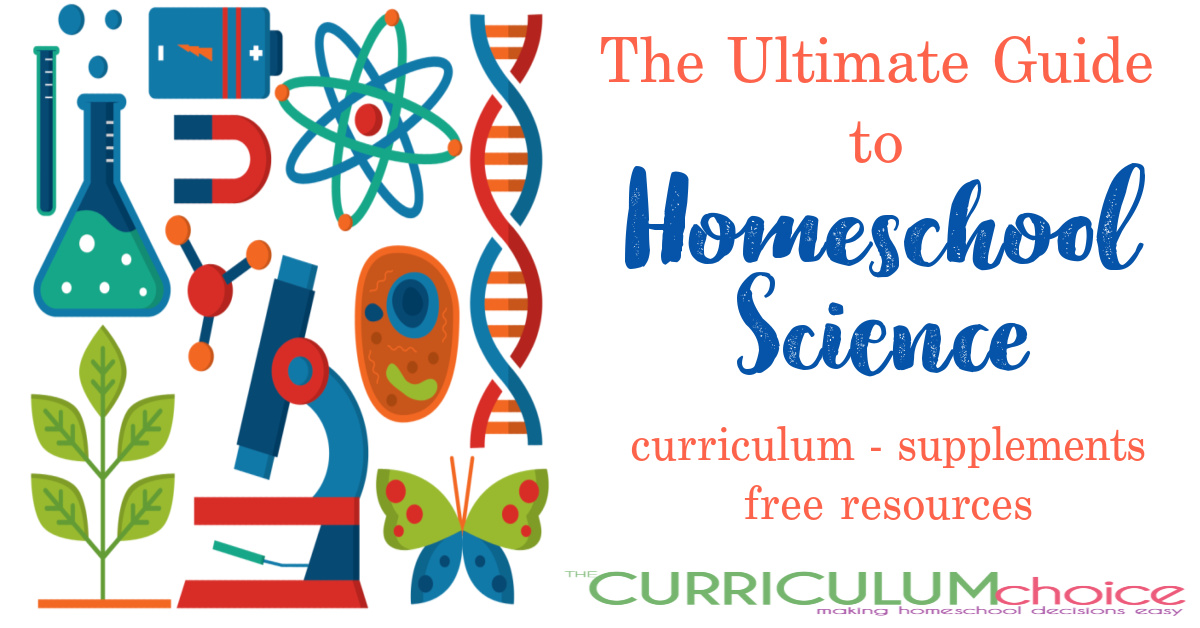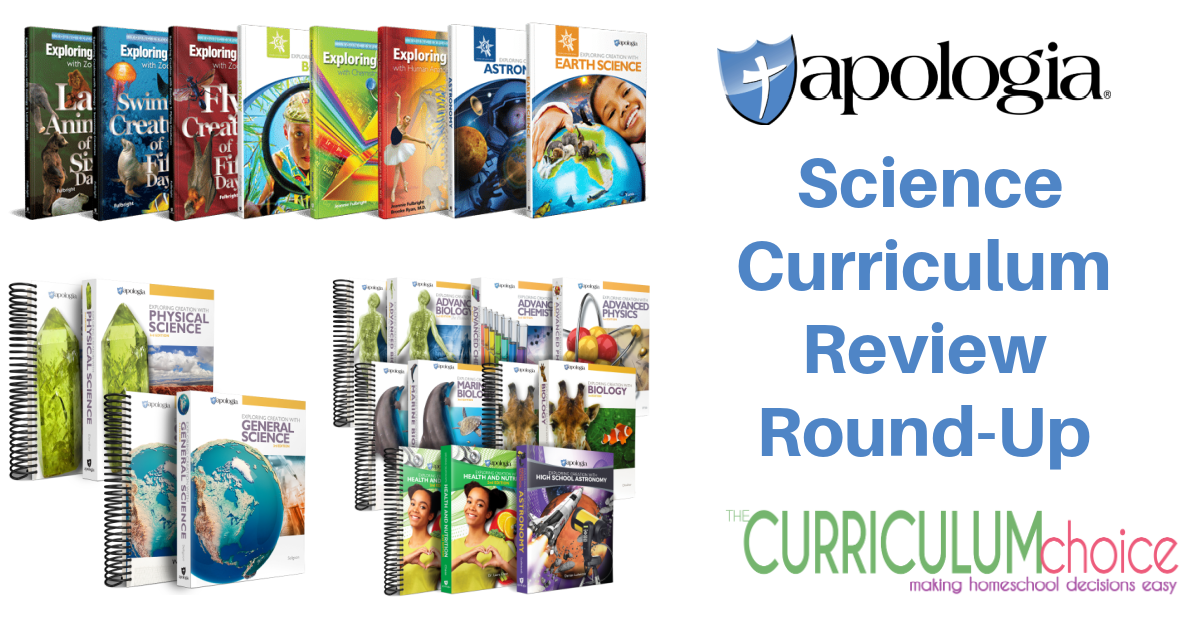Apologia’s Exploring Creation with Biology 2nd Edition is a college-preparatory, high school level, biology course that would be recommended in a student’s freshmen year. It is designed to be an independent study. It includes tests, labs, and video clips to go along with the course. Dr Jay L. Wile is the author of this course.
Apologia’s Exploring Creation with Biology 2nd Edition: An In-Depth Look

Affiliate links are used on this website. Please see our disclosure policy for more details.
General Course Layout
There are 16 modules in Exploring Creation with Biology that are meant to be covered in one year.
The student will read the modules and answer review questions throughout each module. There is a study guide at the end of each module to be done before the student takes a test. There are tests for each module. There are 1-2 experiments for each module. Many of the experiments are examining prepared slides under the microscope. There are four animal dissections.
Supplies Needed
You need to purchase Apologia’s Exploring Creation with Biology textbook or CD-rom version. Both versions are the same.
You need a student microscope, prepared microscope slide set, dissections tools and animal specimens.
All of these supplies can be easily purchased from Apologia or many other homeschool suppliers. I do suggest to shop around for the best prices.
Course Overview
The student will be introduce to the study of biology in the first module. The student will then start to study the five kingdoms of the animal world.
The course starts at the microscopic level of Kingdom Monera.
In the second module the student will collect samples of pond water, and will study the samples under a microscope.
Kingdom Protista is the third module. Microscopic life is studied under the microscope. There are some great video clips of Amoebas.
Kingdom Fungi is the fourth module of the course. The student will have opportunities to do experiments with yeast, and different types of mold. The student will study samples under the microscope.
The fifth module is a basic introduction of chemistry. The student will perform experiments that explore diffusion and osmosis. There is also an experiment with organic bases and acids.
The sixth module is the study of the cell. It is great chapter that explains the magnificent world of cells.
The seventh module is the study of cellular reproduction. Again there are some great video clips to go with this chapter.
The eighth module is a short chapter on genetics. Experiments with punet squares are done in this chapter.
The ninth module is a great chapter on creation vs. evolution. Dr. Wile goes over microevolution and macroevolution. Charles Darwin is introduced along with his theories. It is great chapter with wonderful tidbits of interesting information.
The tenth module is the study of ecology. Dr. Wile did a great job making this chapter interesting with true stories.
The eleventh chapter is where all the fun begins. This chapter is the study of invertebrates. The student will dissect the earthworm. This is a great dissection to start with. It’s interesting and easy to do.
The twelfth module studies one phylum; Pylum Arthopoda. The student has the opportunity to dissect a second time. This time it is the crayfish. This is another great dissection. It is very interesting and fun. The student will also study insects and spiders.
The thirteenth module is the study of Phylum Chordata. There are two more dissections in this chapter. The student will study Class Osteichthyes and will dissect a perch fish. This was my least favorite dissection due to how bony the perch fish is. I would recommend getting a fresh fish to dissect as oppose to a preserved fish. The student will then study Class Amphibia. You can guess what dissection comes next. Yes, its the infamous frog dissection. My kids loved the frog dissection. It is amazing to see all the organs in a small creature. My daughter took the heart out and sliced it in half. It was amazing to see the chambers of the frog’s heart!
Modules fourteen and fifteen are the study of Kingdom Plantae. Again, their will be experiments using the microscope. There is an experiment to dissect a flower, not as fun as the frog but still interesting.
Module Sixteen is the last module. You study reptiles, birds and mammals in this chapter. The last experiment is examining a slide with chicken embryos.
The Pros Of Using This Science Curriculum In Your Homeschool
- This is an excellent college-preparatory course for high school. There has been claims that some students have been able to CLEP out of a college biology class after taking this course.
- The course is set up for independent study.
- There are some interesting video clips that can be seen on the CD-Rom version or the CD companion that goes along with the hardcover textbook.
- The microscopic slides are wonderful quality, and are a great teaching tool with the course.
- The dissections are fun, easy, and interesting.
- The textbook reads easily. The author has a wonderful writing style that keeps the student interested.
- There are tests to go along with the course.
- The author has a pro-creation view point given through-out the book.
The Cons Of Using This Science Curriculum In Your Homeschool
The major con in my opinion is that it can be costly, especially if you don’t already own a microscope.
Where to Purchase?

You can always purchase directly from the Apologia Website.
As well as curriculum retailers like Rainbow Resource and Christian Book.
More Homeschool Science Resources

The Ultimate Guide to Homeschool Science – Looking for homeschool science options? Then look no further than this Ultimate Guide to Homeschool Science! Full curriculum options, supplemental resources and more! Both secular and Christian options as well!

Apologia Science Review Round-Up – Apologia Science Review Round-Up takes all our Apologia Science Curriculum Reviews and collects them here in one place, breaking them down by specific science curriculum.
~ Originally published April 2009, written by Korey
